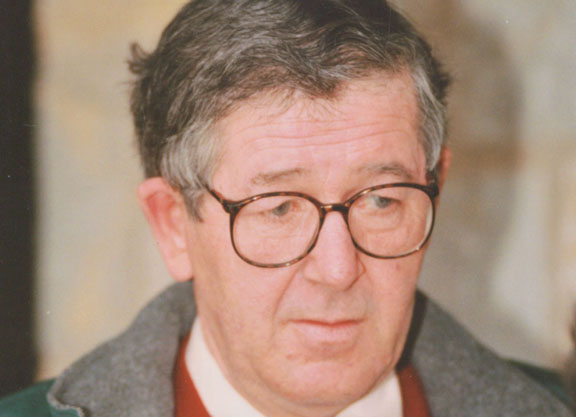TDN is proud to partner with the Keeneland Library and the Nunn Center for Oral History at the University of Kentucky Libraries in a very special collaboration: the Keeneland 'Life's Work' Oral History Project, a series of filmed interviews by TDN columnist Chris McGrath with significant figures in the Thoroughbred industry. An excerpt from current installment, with Dr. Gary Lavin, appears here.
As Will Rogers said, the best doctors in the world are the veterinarians–because their patients can't talk. “And that's true,” says Gary Lavin. “But at the same time, they don't lie to you either. So that gives us an advantage right there.”
His long intimacy with the physical structure of the Thoroughbred has taught Lavin to marvel, above all, at those intangibles housed within. Instructively, in fact, this doyen of racetrack veterinarians has observed a correlation between their performance as athlete and as patient.
Ruffian, sadly, was an exception. Otherwise, however, Lavin has found that the better the horse, the easier he or she will be to manage. “Even under anaesthesia,” Lavin remarks. “Their pulse and respiration were all just textbook.”
In the 100th running of the Kentucky Derby, the roughhouse contested by 23 starters in 1974, the outsider Flip Sal broke down in the backstretch.
“When I got over there, he was in that spot where they take horses they're going to euthanize,” Lavin recalls. “It was an ankle, same thing that had done Ruffian in. He wasn't pawing or anything, he was just standing there. The hospital was just off the racetrack, and I suggested that we just take him over there, see how he would cool out and go from there.”
Lavin and his esteemed colleague Dr. Robert Copelan found the horse still composed and quiet the next morning. “He had a good pulse in his pastern and we decided, well, we'll just see what happens,” he says. “We snugged him up in a tight bandage and, day by day by day, finally we put a cast on him. And he spent the entire summer there. And, of course, Dr. Copelan and I got all the credit for doing a wonderful job. All we did feed him, clean [his] stall and change the cast. That horse saved himself, is what happened.”
Maybe so; though perhaps Lavin's characteristic modesty contributes to this assessment. This, after all, is a man whose work with the racehorse-from claimers to champions, for over three decades as racetrack vet-is measured by an alphabet soup spelling out his peers' esteem: past president of the American Association of Equine Practitioners and Kentucky Thoroughbred Association; winner of the Bellwether Medal for Distinguished Leadership from the University of Pennsylvania; steward of The Jockey Club; trustee of T.O.B.A. and the Breeders' Cup; director of Keeneland; vice-chairman of the Grayson-Jockey Club Research Foundation, etc.
So here's a man who has long put the practical into the practitioner, trusted by elite horsemen to maintain that fragile margin where their dreams meet sinew, bone and ligament. He was born among them, after all, “a racetrack brat.” Though his family has Kentucky roots, and his grandfather was a doctor, the medical and Bluegrass strands only became entwined when Lavin–himself born in New Orleans; raised in Arkansas; and trained in Pennsylvania–cut his teeth, after qualifying in 1962, by sitting in with Dr. William R. McGee of Hagyard-Davidson-McGee.
The idea was to learn about broodmares. The racetrack, young Lavin knew about. His father, an assistant trainer for Greentree in California before the war, had then “dug bullets out of mules coming off the Burma trail” before working his way from gate crew to racing secretary at Keeneland; and then to similar appointments from Churchill to Oaklawn to Delaware.
“He was very good at the job and knew everybody,” Lavin says. “He was that kind of person, well liked and very successful. Having grown up in that atmosphere, I knew more than a little something–maybe not as much as I thought, but a whole lot–about the front side and how all that worked.”
Click here to read more.
Not a subscriber? Click here to sign up for the daily PDF or alerts.






